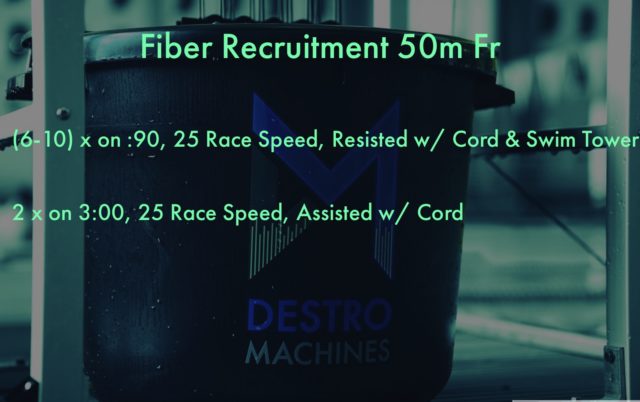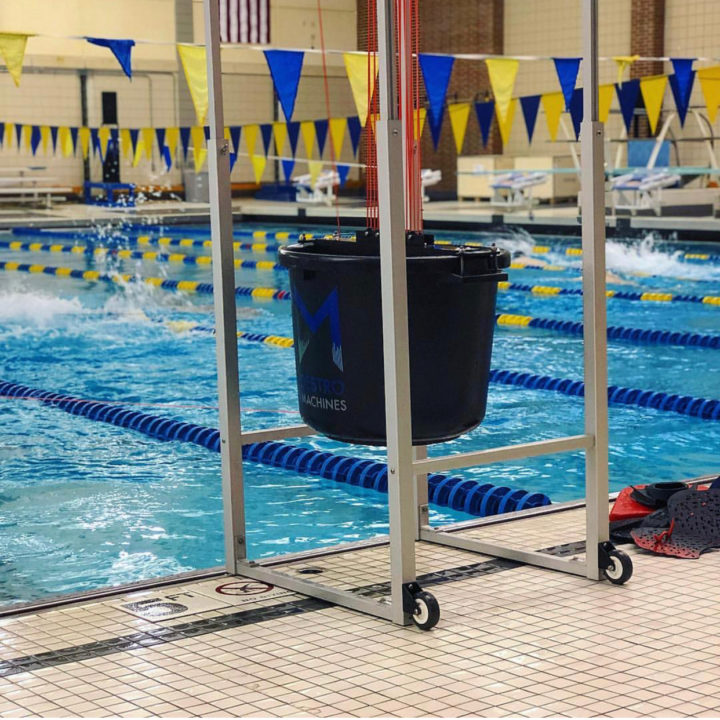Courtesy of Chuck Destro, CEO of Destro Machines
As many of you already know, training for long course is fundamentally different from training for short course races. When we breakdown the differences, we can tailor our training more specifically towards our goals. We understand that many swimmers don’t have the luxury of training in a LCM pool whenever they would like, so we broke down this article in a way that anyone can benefit.
Most Notable Differences between LCM and SCY
- Swimming effort must be sustained for a much longer period of time
- The events become much more about maintaining speed rather than acceleration off of the wall and through the breakouts.
- Flutter Kicking becomes much important than in SCY
- Dolphin Kicking becomes less important than in SCY
These small changes affect athletes much differently from swimmer to swimmer, however, the following are some of the methods we use to take advantage of these differences.
Training for LCM races in a SCY pool
Challenge #1
In our opinion, this is the most difficult challenge to overcome when training in a SCY pool. However, to do this, we can use a variety of tools and techniques. We want to slow the athletes swimming velocity by utilizing drag or resistance so that each 25 scy is closer to that athletes goal 50 lcm split. This is a difficult challenge, because the introduction of too much resistance will breakdown the athletes technique. We should be trying to slow the athlete down to simulate LCM swimming, NOT breakdown their strokes. Unfortunately, we will not be able to simulate LCM perfectly this way, but our goal is to get as close as we can. A technique we like to use is to have an athlete swim a 25 assisted and go directly into a 25 resisted. This technique increases the duration of fatigue in an attempt to simulate LCM as best as we can. Below is an example set that was utilized in a SCY pool to train Lactic Production for the 100 LCM Free
Example:
(6-10) x on :60 | 25 Good Technique Assisted by Swim Tower
| 25 Race Speed Resisted by Swim Tower

Challenge #2
When we examine most long course races, even the 50m freestyle, you can notice that the winners are typically not the athletes that accelerate to speed the fastest, but rather, the athletes that decelerate the least. Stretch cords are our favorite tool for attacking this challenge. We see the progressive change in resistance as extremely useful for simulating the deceleration that athletes feel over the length of the long course pool. Cords can be used resisted or assisted in tandem with swim towers to provide high levels of progressive resistance for any level of athlete. Below is an example set that was utilized in a SCY pool to train Fiber Recruitment for the 50M Free. The goal here is to fatigue the body, then attempt to maintain the speed generated by the cords.
Example:
(6-10) x on :90 | 25 Race Speed Resisted by Cord & Swim Tower
2 x on 3:00 | 25 Race Speed Resisted by Swim Tower directly into 25 Assisted by Cord

Challenges #3 & #4
Anyone who has watched Michael Phelps swim can tell you that both dolphin kicking and flutter kicking are critical for LCM racing. However, because we aren’t underwater for 2/3rds of the race like we are in SCY, we should shift our approach slightly. We emphasize speed and power for dolphin kicking, and less endurance training. Conversely, for flutter kicking, we incorporate a little more endurance training in our approach. Our favorite tool for training kicking has become drag sox. The localized increase in drag slows down the athlete, helping to simulate LCM, plus they make kicking more fatiguing in general. Drag Sox can be used with or without fins depending on the goal of the workout. Below is an example set that was utilized to train ‘Power’ for the 50M Butterfly.
Example:
(10-20) x on 2:00 | 6 Dolphin Kicks into 4 Strokes MAX w/ Drag Sox & Fins

Thank you all for reading, and please be sure to follow us @DestroMachines on Instagram or Facebook. We will be releasing some very new and exciting products soon, so stay tuned.
About Destro Machines
Destro Machines is a family and swimmer owned company. We were founded in 2015 when we realized that swimmers and coaches were lacking the effective and affordable training technology required for them to reach their goals. Our team of engineers, has spent months working with Division I College and top tier highschool programs to develop a tower that’s not only less expensive, but also more effective than any other resistance training system available.
Swim training courtesy of Destro Machines, a SwimSwam partner.


Training for lc in a sc pool is difficult but can be done. My college coaches were able to get me ready for a lc taper meet in only a month, using a lot of power towers and resistance cords like mentioned.
Jason Lezak trained in a SC pool going 5 days a week and 1HR in the pool